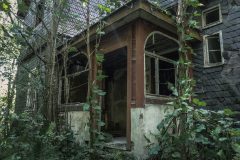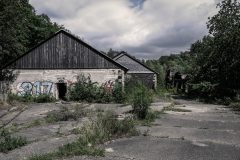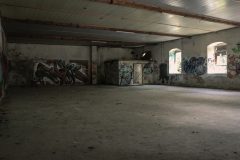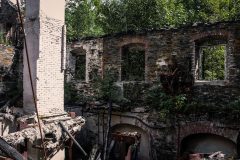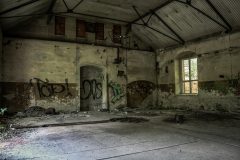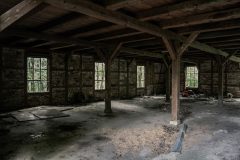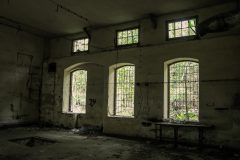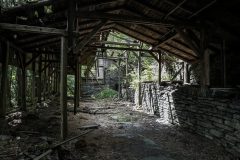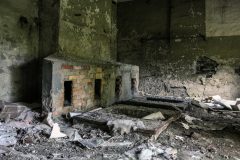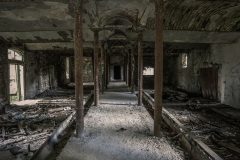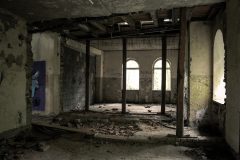The slate quarrying in Lehesten was first mentioned in 1485. From the 18th century onwards, the mining was intensified, and a large number of smaller quarries were created. At its peak between 1850 and 1890, around 2,500 miners were employed in over 40 quarries in the region to extract slate. In 1850, the Oertel family of entrepreneurs acquired some quarries near Schmiedebach. Due to the innovative spirit and drive of Karl Oertel, the family business grew to become the largest employer in this industry in Thuringia, with 860 employees. The quarry known today as Oertelsbruch is a merger of many individual quarries that Oertel had acquired over the years.
The Lehesten open-pit mines (including the Oertelsbruch and the Staatsbruch) are still considered the most extensive slate mines on the European continent. Under Karl Oertel’s leadership, a modern infrastructure was developed around the mining area. Among other things, a commercial building with a kitchen, a dining room, a bakery, and a brewery were built. In addition, a library, various workshops such as a forge, locksmith, wheelwright, sawmill, and carpentry shop, a private school, and a company hospital were built. Furthermore, a power plant was put into operation, so that the site was supplied with electric lighting before Carl Zeiss Jena.
The quarry was also connected to the newly built railway line Saalfeld – Lichtenfels in 1886. In 1903, Karl Oertel died, and the following decades were a stark contrast to the heyday of the 19th century. During World War I and the hyperinflation of the 1920s, the slate mining industry came to a near standstill. In 1943, the SS sealed the fate of the Oertel quarry and the processing of slate by confiscating it and establishing the “Laura” concentration camp. After the destruction of the Peenemünde Army Research Center in August 1943, rocket production was systematically relocated underground. The Oertel quarry became the “Vorwerk Mitte” and was intended to serve as a production and storage site for V2 rockets. The Laura concentration camp housed almost 1,230 prisoners of war who were forced to work in the Oertel quarry. The prisoners expanded the tunnel system, which, at its maximum expansion, was 7 kilometers long, had 54 extraction rooms, and covered approximately 600 square meters. Until the end of the war, the V2 rockets were mainly tested, defects were fixed, and prepared for shipment. After the war, the facilities were dismantled by the Soviet occupying forces, and the tunnel system was blown up.
In 1945, the “VEB Vereinigte Thüringer Schiefergruben” (VTS) was established, under whose leadership both surface and underground slate mining resumed and continued until the 1960s. After German reunification, the quarry was reopened by the “Vereinigte Thüringische Schiefergruben GmbH” company. Until January 2009, roofing and slab slate were extracted above ground. Since the closure, the site has been decaying.
Our location rating:



